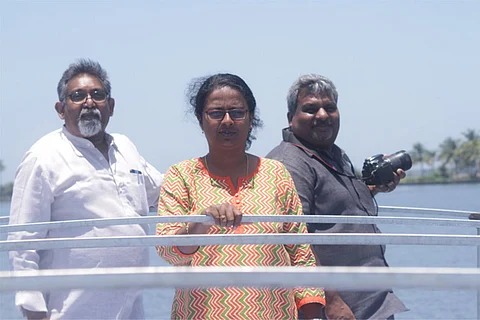

It is commendable how many persons in Kerala swung into action to offer each other timely rescue, medical assistance and food during one of the worst flood crises the state has witnessed. However, there were some sections of society that were reportedly not beneficiaries of such aide and/or relief materials. Ajay Kumar, director of RIGHTS, a non-profit organisation for human rights based in Thiruvananthapuram, is in the process of identifying such hotspots in the state, where people from marginalised communities have been excluded from the rescue operations and relief activities since the beginning of the floods.
“Our interventions have a focus on inclusion of marginalised sections, including Dalits, Adivasi, women, people with disabilities and women-headed households,” says Ajay, who is working along with Oxfam and National Dalit Watch (NDW), to visit and identify vulnerable areas in four districts of Kerala - Pathanamthitta, Alleppey, Idukki and Wayanad.
As part of this vulnerability mapping initiative called Kerala Alliance of Dalits and Adivasi for Post Disaster Monitoring and Engagement, the team of volunteers is interacting with people residing in remote, inaccessible and excluded areas in these districts, in order to evaluate instances of caste-based exclusion and segregation during the flood relief operations.
“There is a large section of Dalits and Adivasis who don’t have land titles and stay on encroached lands. They have not been listed in any government document and hence, have been excluded from receiving any benefits. During our evaluation in Wayanad, we also found there were 1,000 plus unmarried single mothers, who were badly affected and left helpless without any assistance. These sections of people have not come in the web of beneficiaries or affected persons’ list,” says Ajay.
The team also learnt that there were relief camps in the interior parts of these districts that were completely left out from relief material distribution. “Some of these camps, which were completely inaccessible by road or water, were deprived of food, as nobody could take relief material to these areas,” adds the Dalit rights activist.
According to Ajay, caste-based segregation of people seeking shelter at relief camps too was common in many areas during the floods.
“At a relief camp in Pathanamthitta’s Aranmula, we learnt that 16 Dalit families were allotted one classroom, while other families were given separate classrooms. Similarly, a few Syrian Catholic families refused to stay with some Dalit families at a camp in Pallipadu in Alleppey district. They left that camp and relocated to another camp,” says Ajay, recalling a few such cases his team came across during the evaluation.
He adds, “In the event of such instances, where people with societal advantages moved to other locations, relief materials were diverted to those areas.”
The team factored in three aspects while conducting the evaluation: “First, if these vulnerable sections have been able to access the relief materials provided by the government. Second, what kind of relief materials have these people received. Third, if there are any long-term rehabilitation plans for the marginalised communities.”
So far, Ajay and his team have mapped 100 such vulnerable and excluded areas in the four districts. “We have given this list to groups and organisations that are engaged in relief activities, including Oxfam, appealing them to include these areas in their operations. Additionally, we have collected as many as materials as possible and distributed them in these areas,” says Ajay.
Next, the team is gearing up for geo-tagging such vulnerable areas. “Through this inclusive exercise, we want to have negotiations and engagements with the government. We want to submit our preliminary study and recommendations to the government and ask them to intervene,” explains Ajay.
One of the recommendations the activist hopes to highlight is the distribution of compensation based on equity instead of equality. “Kerala government promised Rs 10,000 for all affected families. Our recommendation is that the fund distribution should be equity-based, where the social and economic location of the beneficiary is considered as the primary aspect. A person in a multi-storey house and a person near a paddy field cannot receive the same amount. Relief activities should be based on the ability of families or people to overcome the crisis,” he explains.